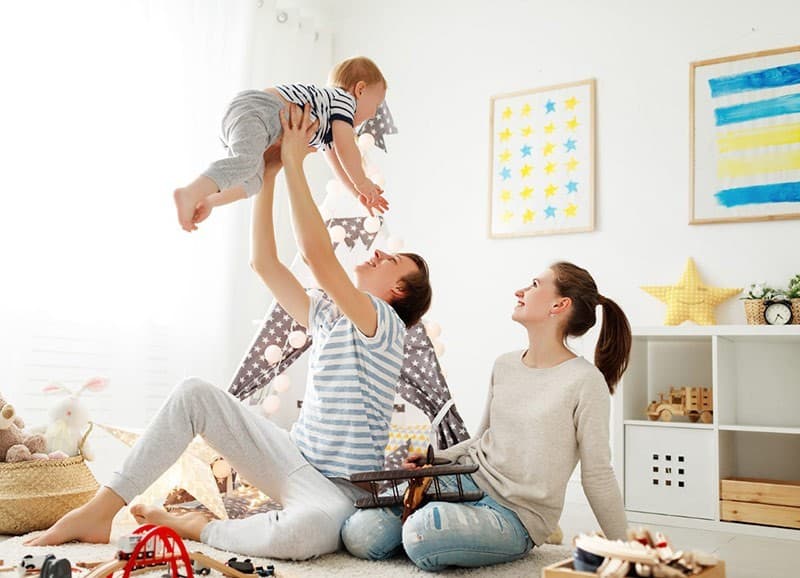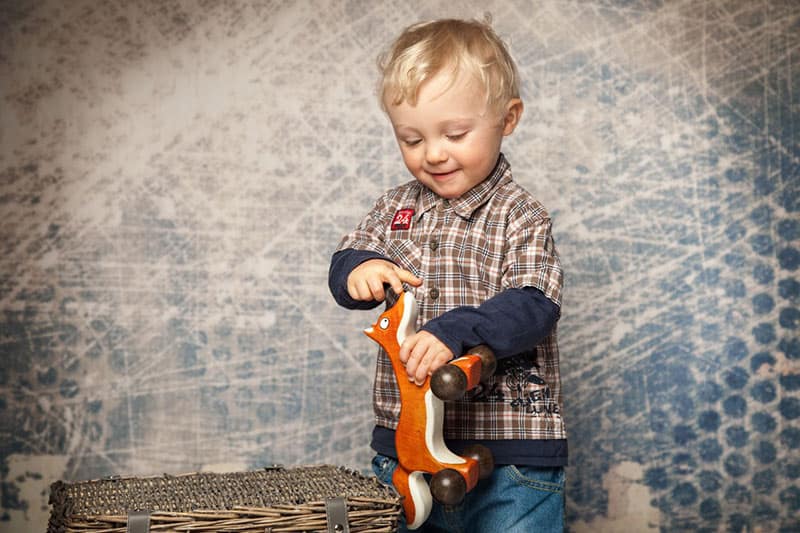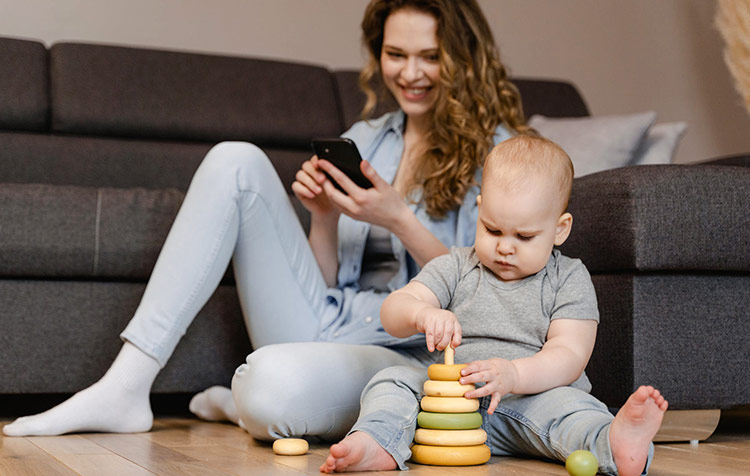The still young lives of many babies and toddlers are already shaped by plastic, be it the pacifier, the toy or the Diapers. This means Unfortunately, they have hardly been born when they come into contact with dangerous plasticizers, which can of course cause severe consequential damage, especially in a young body. What are they and how can you protect your child from them?
Here is another short Table of contents for the article:
- Definition plasticizer
- Consequential damage due to plasticizers
- Legal requirements
- Protect children
- Toy purchase
- Reduce plasticizers
- Summary
Definition: What are plasticizers (phthalates)?
As the name suggests, plasticizers make plastic products more elastic and "softer". They are therefore found in numerous products such as plastics, rubber, adhesives, films, cables, paints and coatings. Plasticizers are among the best-selling chemicals on the market and are available in numerous different types - much of which is designated as harmful to the environment and human health.
These include first and foremost the so-called "phthalates" with a market share of 70 percent. Phthalates are mainly used in plastics and plastic materials. According to the Federal Environment Agency Around one million metric tons of phthalates are processed annually in Western Europe alone. 90 percent of this goes into so-called soft PVC, which is also in plastic toys or other products for babies and toddlers.
Consequential damage caused by plasticizers in children?
Restrictions in fertility, promotion of cancer or damage to vital organs: The alleged dangers of plasticizers are much discussed in public. In fact, such harmful effects on health are repeatedly proven by studies. For example, the once-popular phthalate DEHP has now been replaced, as it can impair the reproductive ability of the People at risk.
But this does not solve the problem, because other plasticizers have also been shown to pose health risks. Studies as well as animal experiments testify to the following risks:
- Changeen in the endocrine system
- Developmental disorders in the unborn
- Injury to the Kidneys and Liver
- Increase in cancer risk
- Damage to endocrine glands such as the pituitary gland or thyroid gland
- and much more.
In a body that is still growing, these effects are of course particularly serious. In addition, babies and children are even more exposed to plasticizers than adults. What is the reason for this?
Plasticizer danger for babies and children is everywhere

A large part of the absorption of toxic plasticizers into the body takes place through food. This is because phthalates are also used in packaging materials and pass directly into food. Some of the pollutants are even released into the air, which is then simply inhaled.
However, children not only absorb the toxic chemicals through food and air, but babies and toddlers in particular still largely discover the world with their mouths. Thus, phthalates increasingly enter the child's body via the mucous membranes, saliva and inhaled house dust, which can be detected by increased levels of phthalate degradation products in the urine. What's more, children, through their toys alone, are already on a large scale With plastic come into contact with. But besides the plastic toys are also the packaging of care products, diapers, baby bottles, soothers or children's dishes by gehazardous plasticizers contaminated.
To what extent does the law protect children from plasticizers?
As manufacturers often take the most convenient, cheapest route, we are finding more and more pollutants in toys and the like - But laws are helping to reduce this nonsense.
Ban on plasticizers in baby products and toys
In order to better protect children from exposure to plasticizers in the future, the phthalates DBP, DEHP and BBP were banned at EU level in 2005 in all articles and toys for babies and children., likewise in Cosmetic products. The regulations for products that can be put in the mouth by small children are even stricter. Here, the plasticizers DNOP, DINP and DIDP are also prohibited.
Furthermore, the phthalates in question must not be contained in paints, fragrances and adhesives or in other mixtures used, for example, in toys.
Limit values for food
In the food sector, strict limits apply, as well as restrictions on use. The latter means, for example, that phthalates must not be mixed with fatty food for babies and Children are allowed to come into contact. This is because fats or oils can promote a dissolution of toxins so that they go directly into the food.
Dangerous PVC
Although the German and European legal situation is already moving in the right direction as a result of these requirements, unfortunately the laws that have been passed to date are not sufficient. but is by no means sufficient to adequately protect citizens - and thus also babies and children - from the dangers posed by plasticizers. PVC, for example, does not have to be labeled, despite its high phthalate content. Instead, consumers have been left behind by designations such as.
- VC,
- Vinyl or
- the numerical code 03 in a triangle of arrows
as synonyms for PVC are increasingly unsettling. There is therefore a lack of clear labeling of hazardous or non-hazardous Plastics. Consumer protectionists also criticize excessively high limit values as well as missinge controls. Parents should therefore not rely solely on legal regulations to protect their children from phthalates.
How can parents protect their children from plasticizers?
The Consumer Center empromises the elimination of PVC in any form. Unfortunately, this is not always easy with toys in particular: phthalates are usually present in dolls, balls or water toys. Likewise in many electronic toys or in toys made of plastic such as plastic figures. But as already mentioned, the substance PVC is not always identified as such. Parents should therefore pay attention to the following points:
- Note "phthalate-free
- Note "PVC-free
- Seal of approval "Spiel gut
If the materials of the toys cannot be clearly determined because, for example, they are foreign goods without the corresponding specification or second-hand products from flea markets, you should rather keep your hands off them. But don't worry, there are alternatives: The PP, PE and ABS plastics are considered safe because they do not contain phthalates or other plasticizers.

Tips for the "healthy" purchase of toys
So, in principle, it is necessary to ban all toys containing PVC from the children's room. With this in mind, toys purchased before October 2001 should be were critically examine and in doubtDispose case. Only then was namely the ban on contaminated plastic toys is effective. However, to date this only applies to children under the age of three.
This means that toys approved for children over the age of three may contain higher levels of phthalates. That's why you should exercise particular caution when buying toys made of plastic and look for the GS - Geprüfte Sicherheit (tested safety) - test seal. Because neither the CE mark nor numerous other Labels guarantee that they are free of harmful substances. Other tips for buying safe toys are as follows:
- Before buying, you should smell toys such as dolls or cuddly toys. As a rule of thumb, anything that smells chemical is not suitable for children.
- It is better to choose brand-name products whose ingredients you have been adequately informed about than cheap toys that may even come from abroad and therefore do not comply with the German or European limits.
- Especially when buying on the Internet, you should therefore check the origin of the toys.
But it is not only in the playroom that hazards from plasticizers lurkbut also in food, in the car or in house dust.
Reduce plasticizers & phthalates in everyday life
To protect your child from harmful substances as best as possible, you shouldr consider other basic rules. On the one hand, this concerns the purchase of food: These should not be packaged in soft plastic film, or better yet, not in plastic at all. Alternatives such as glass containers are not only healthier, but also more environmentally friendly.
On the other hand, many plasticizers are inhaled through the air. That's why you should regularly dust, vacuum and clean the carpets in the household as well as in the car - especially in a new car. Likewise right Ventilation will help against the pollutants and plastic products such as toys should not be exposed to direct sunlight.
Doing away with PVC in floors and wallpaper can also significantly improve the indoor air and thus reduce the health risks posed by phthalates. All in all, it is important to develop a healthy awareness of plasticizers and to be more careful with the topic in the future. This will not only benefit the health of your child and your own body, but also the environment.
Plasticizers are a danger!
Plasticizers lurk everywhere and are particularly dangerous for babies and young children. The toxins are not only hidden in toys, but in thousands of objects that we encounter in everyday life. Today you learned what exactly plasticizers are all about and how you can protect your children and yourself from plasticizers in everyday life.
Do you have questions, suggestions or your own experiences with softeners? Then feel free to write me a comment under this article.
Many greetings,
Mareike
PS.: In the article Plastic in the food chain you'll learn how plastics get into our food. You are also welcome to take a look at the Natural Health Blog um.






I think it's fantastic that someone is committed to this important area !!!!
Danke dir! 🙂
Many greetings
Christoph
Comments are closed.